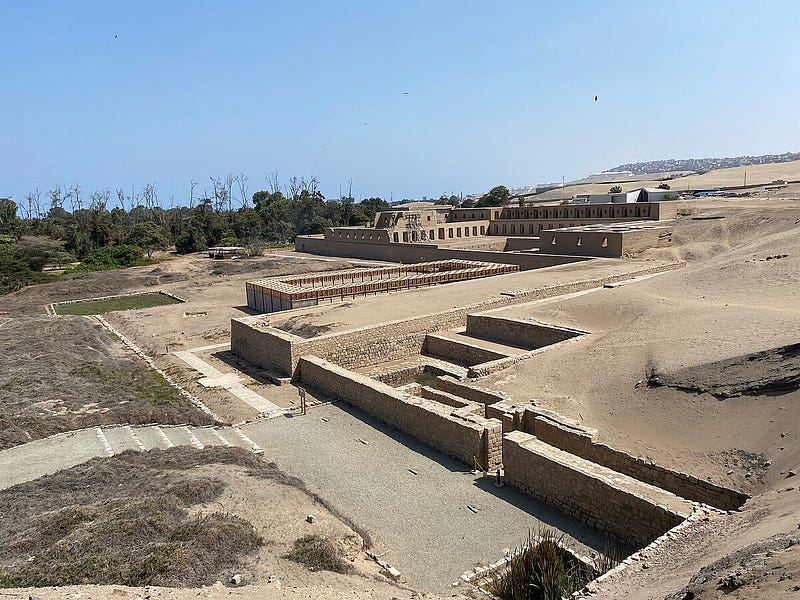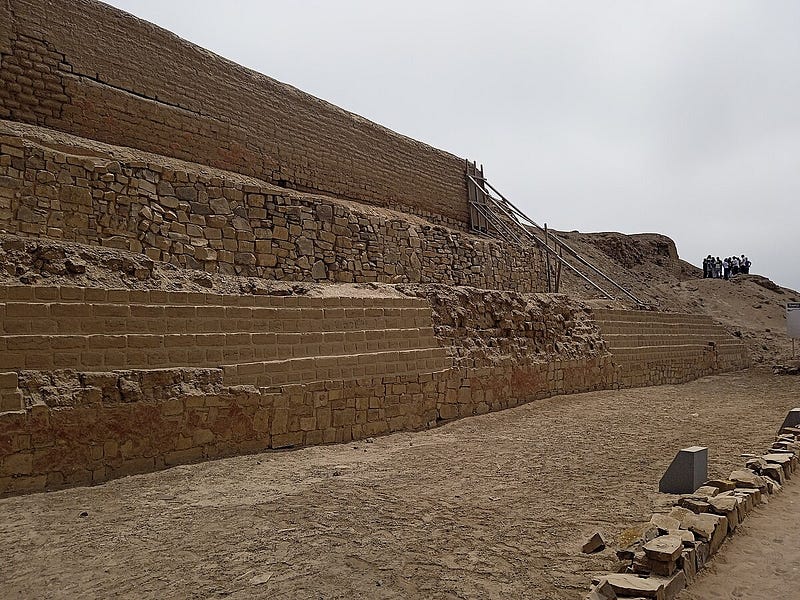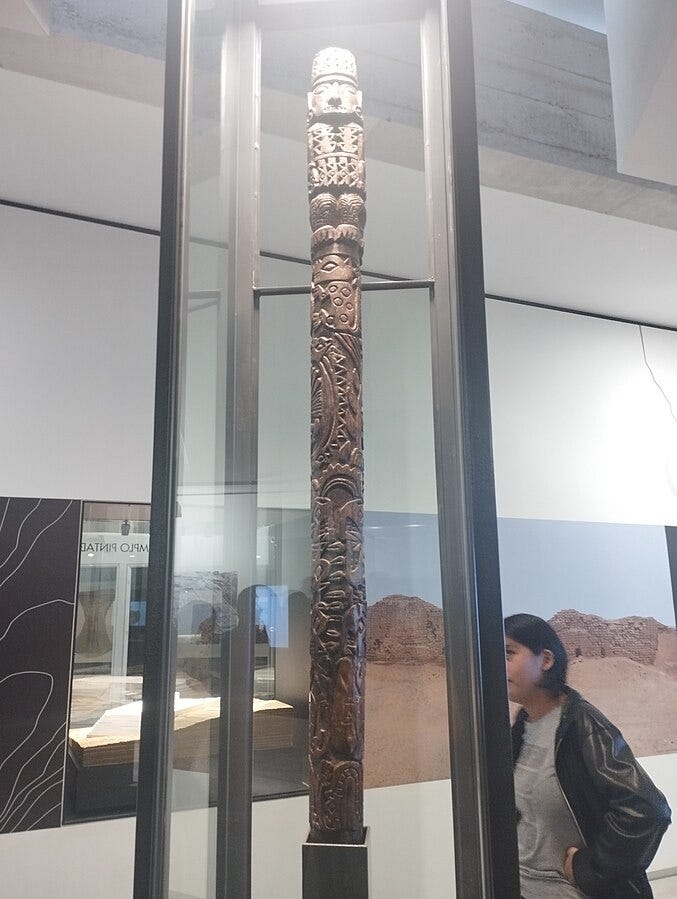Remarkable Discovery in Peru: Intact Burials with Masks and Scepters
Written on
Chapter 1: The Discovery at Pachacámac
A stunning archaeological find in Pachacámac, located south of Lima, Peru, has revealed 73 intact burials featuring intricately carved masks and beautifully crafted wooden scepters. This significant discovery was made by researchers from the Pontifical Catholic University of Peru and dates back approximately a thousand years to the era of the Wari Empire.

The burials, which consist of funerary bundles, indicate that the deceased were wrapped in textiles. Notably, both male and female individuals were adorned with carved wooden and ceramic masks attached to their bundles. These graves originate from the period of the Wari Empire’s expansion, spanning roughly from 800 to 1100 AD. The Archaeoscience website was among the first to report this remarkable finding.
According to the researchers, these bundles were initially buried individually but later placed together in groups. The exceptional preservation of many of these remains is particularly noteworthy. In the ancient Andes, the belief was that death did not signify an end but rather a transition to a parallel existence with ancestors (hurin pacha). It was the responsibility of family members to ensure that the deceased were properly prepared for this continuation of life.
The researchers emphasize that the prevalence of funerary bundles in coastal Peruvian cemeteries during the later periods (800–1531/32) and at the dawn of colonial times underscores the deep commitment to maintaining life after death for their ancestors. It was believed that the deceased would return annually to oversee crops and that the water flowing from the mountains to the coastal deserts relied on them.
Chapter 2: A Collapsed Wall Reveals Secrets
Recent research took place at a location where a wall from the Inca and colonial periods had collapsed. Scientists believed that the heaps of adobe bricks might have deterred grave robbers from accessing the tombs. This hypothesis proved accurate, as the researchers—Cynthia Vargas, Doménica Villavicencia Mergoni, and Ana Fernández—discovered impeccably preserved funerary bundles.
During the Wari Empire, Pachacámac served as a significant settlement featuring a ceremonial platform, which now lies beneath the rubble of the later Painted Temple from the Inca period. The burials offer invaluable insights into the social status of men, women, and children. Nineteen bundles have been carefully relocated to laboratories for examination using computer tomography, allowing for non-invasive analysis.
The findings from Pachacámac will also be compared with previous discoveries at Castillo de Huarmey, where a collective burial of elite women from the Wari Empire was uncovered in 2010.

In addition to the burials, researchers unearthed two beautifully crafted scepters, which were part of a votive offering and covered with fragments of Spondylus princeps shells imported from Ecuador. The evidence suggests that the cemetery was not exclusively reserved for the elite, challenging previous assumptions. Instead, it resembles the site of Ancón, historically a burial ground for fishermen during both the Wari Empire and subsequent periods.
Chapter 3: Pachacámac's Cultural Significance
Pachacámac was renowned as an oracle and temple dedicated to the deity Pacha Kamaq during the later Inca era. Its name translates to “the one who gives life to the earth.” The recent burials were discovered within a vast cemetery complex that spans various periods, situated at the foot of the Painted Temple. This necropolis was initially uncovered in the late 19th century by Max Uhle, a pioneer of scientific archaeology in the Andes, although he did not publish his findings. Unfortunately, the cemetery has since been systematically ravaged, including by looters.
The artifacts from these burials are intricately carved from wood and depict two dignitaries adorned with headgear characteristic of Tiwanaku culture. These scepters were found nearby and are believed to date from the same period.

Contrary to earlier beliefs, Pachacámac did not serve continuously as a sacred city and worship center from the construction of the Old Temple of the Lima culture until the Spanish conquest. During the Wari Empire, it functioned as a modest settlement with a distinct layout. It only became a monumental site befitting an oracle nearly five centuries later, following the incorporation of this region into the Inca Empire.
Chapter 4: The Impact of Climate Change

As we delve into this historical context, it is essential to recognize contemporary issues such as global warming. Rising temperatures, intensified summers, and increasing droughts are pressing concerns that reflect the ongoing impact of climate change on our world.
Attention all readers!
As content creators on Medium.com, we often face limited compensation for our efforts. If you appreciate my articles, please consider supporting me on my “Buy Me a Coffee” page. Your contributions can make a significant difference in sustaining my passion for producing quality content. Thank you for your support!
